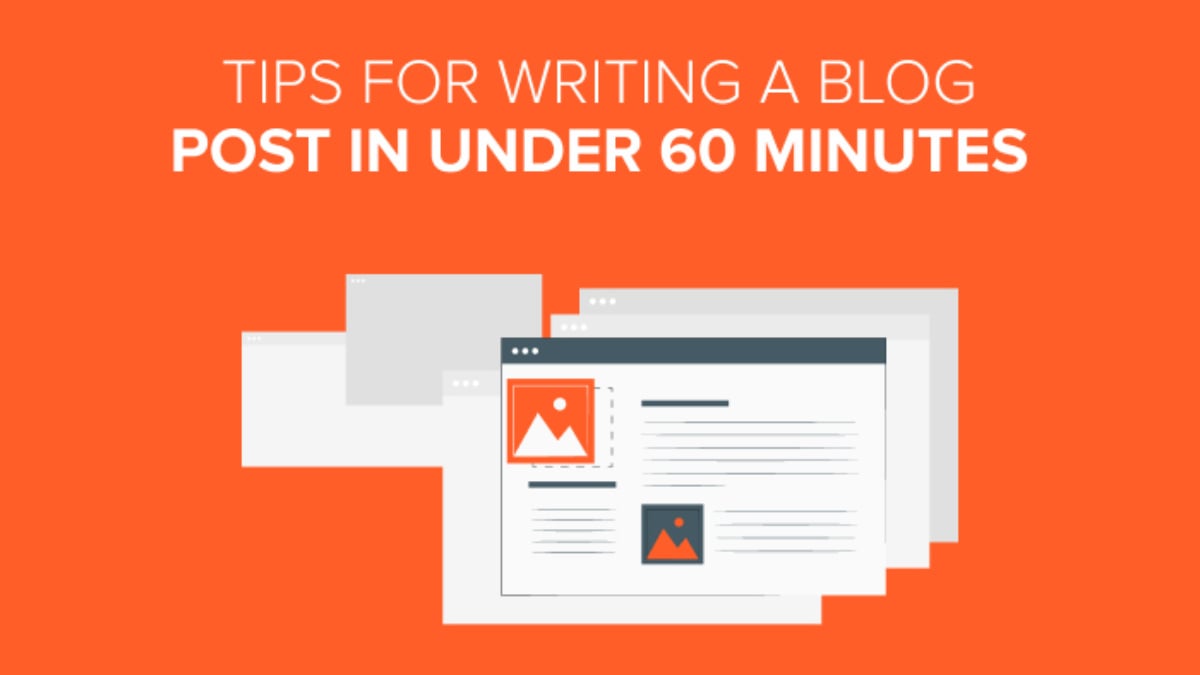The Dos and Don’ts of Writing Company Blog Articles: A Comprehensive Guide
The Importance of Knowing Your Target Audience
As a company, you want to create blog articles that resonate with your target audience. After all, your blog is a reflection of your brand, and it’s important to make a good impression. That’s why understanding your target audience is crucial.
Here are some reasons why knowing your target audience is important for writing company blog articles:
1. You can create content that speaks to their needs and interests.
When you know who your target audience is, you can tailor your content to their specific needs and interests. For example, if your target audience is made up of small business owners, you might create articles about how to improve productivity, manage finances, or market their business effectively.
2. You can use the right tone and language.
Your target audience influences the tone and language you use in your blog articles. If you’re writing for a younger demographic, you might use a more casual tone and incorporate pop culture references. On the other hand, if you’re writing for a more professional audience, you might opt for a more formal tone and avoid slang.
3. You can choose the right topics.
When you know your target audience, you can choose topics that are relevant to them. For example, if your target audience is interested in sustainability, you might create articles about eco-friendly products or ways to reduce their carbon footprint.
4. You can increase engagement and conversions.
When you create content that resonates with your target audience, you’re more likely to see engagement and conversions. Your audience will be more likely to share your content on social media, leave comments, and take action based on your recommendations.
To better understand your target audience, you can use tools like Google Analytics to track demographics, interests, and behaviors. You can also conduct surveys or focus groups to gather more information about their needs and preferences.
In conclusion, knowing your target audience is essential for creating effective company blog articles. By understanding their needs and interests, you can create content that resonates with them and increases engagement and conversions. So, take the time to get to know your audience and tailor your content accordingly.
Crafting Compelling Headlines
When it comes to writing company blog articles, the headline is arguably the most important element. It’s the first thing your audience sees and it’s what ultimately determines if they will click through to read the article or not. A compelling headline can make all the difference in the success of your blog post. Here are some tips for crafting headlines that grab attention:
1. Use Numbers
Headlines with numbers tend to perform better than those without. This is because they give readers a clear idea of what to expect from the article. For example, “10 Ways to Boost Your Productivity” is much more enticing than “How to Be More Productive.”
2. Make it Specific
Vague headlines don’t give readers a clear idea of what the article is about. Instead, make your headline specific and descriptive. For example, “The Ultimate Guide to SEO for Online Retailers” is much more compelling than “SEO Tips for E-commerce Websites.”
3. Use Power Words
Power words are words that evoke emotion and grab attention. Some examples include “amazing,” “proven,” “surprising,” and “secret.” Incorporating these words into your headline can make it more compelling and enticing.
4. Keep it Short and Sweet
Long headlines can be overwhelming and hard to read. Keep your headline short and to the point. Aim for around 6-8 words if possible.
5. Test and Refine
Finally, it’s important to test and refine your headlines. Use tools like CoSchedule’s Headline Analyzer or Emotional Marketing Value Headline Analyzer to see how effective your headline is and make improvements as needed.
In conclusion, crafting a compelling headline is crucial for the success of your company blog articles. Use numbers, make it specific, use power words, keep it short and sweet, and test and refine to create headlines that grab attention and entice readers to click through and read your content.
Tips for Writing Engaging Content
Now that you have a better understanding of your target audience and how to craft compelling headlines, it’s time to focus on the content itself. Here are some tips for writing engaging content that keeps your audience coming back for more:
1. Start with a Strong Hook
The first sentence of your article should grab your audience’s attention and make them want to keep reading. Use a surprising statistic, a thought-provoking question, or a bold statement to hook your readers from the start.
2. Use Stories and Examples
Stories and examples can make your content more relatable and interesting. Use real-life examples, case studies, or personal anecdotes to bring your content to life and make it more engaging for your audience.
3. Break Up Your Content
Long blocks of text can be overwhelming and hard to read. Break up your content into shorter paragraphs, use bullet points or numbered lists, and include subheadings to make your content more scannable and easy to read.
4. Use Visuals
Visuals like images, infographics, and videos can make your content more engaging and shareable. Use visuals to break up your content and make it more visually appealing for your audience.
5. Write in a Conversational Tone
Writing in a conversational tone can make your content more approachable and engaging. Write as if you’re having a conversation with your audience, and avoid using overly formal or technical language.
6. Provide Value
Ultimately, your content should provide value to your audience. Whether it’s educational, entertaining, or informative, make sure your content is relevant and useful to your readers.
In conclusion, writing engaging content is crucial for the success of your company blog. Start with a strong hook, use stories and examples, break up your content, use visuals, write in a conversational tone, and provide value to create content that keeps your audience coming back for more.
Utilizing Keywords and SEO Best Practices
Writing engaging content is important, but it’s equally important to ensure that your content is optimized for search engines. This is where keywords and SEO best practices come in. Here are some tips for utilizing keywords and SEO best practices in your company blog articles:
1. Research Keywords
Before writing your article, research keywords that are relevant to your topic. This can help you understand what your audience is searching for and how to optimize your content accordingly. Use tools like Google Keyword Planner or SEMrush to find relevant keywords for your article.
2. Use Keywords Strategically
Once you’ve identified relevant keywords, use them strategically throughout your article. Incorporate them in your headline, subheadings, and within the body of your content. However, avoid overusing keywords as this can be seen as spammy by search engines.
3. Optimize Your Images
Images can be optimized for search engines as well. Use descriptive file names and alt-text for your images that include relevant keywords. This can help your images appear in search results and drive traffic to your website.
4. Use Internal and External Links
Linking to other pages on your website and external sources can improve your SEO. Internal links help search engines understand the structure of your website and external links show that your content is relevant and credible.
5. Optimize Your Meta Description
Your meta description is the snippet of text that appears in search results. Make sure to optimize your meta description with relevant keywords and a compelling description of your content. This can encourage users to click through to your website.
6. Use Header Tags
Header tags (H1, H2, H3) not only help break up your content, but they also signal to search engines what your content is about. Use header tags strategically and incorporate relevant keywords within them.
In conclusion, utilizing keywords and SEO best practices is crucial for ensuring that your company blog articles are optimized for search engines. Research keywords, use them strategically, optimize your images and meta description, use internal and external links, and use header tags to create content that is both engaging and optimized for search engines. By following these tips, you can improve your search engine rankings and drive more traffic to your website.
Avoiding Common Blogging Mistakes
Creating a successful company blog requires more than just writing engaging content and optimizing it for search engines. It also requires avoiding common blogging mistakes that can hinder your blog’s success. Here are some common blogging mistakes to avoid:
1. Not Posting Enough
Consistency is key when it comes to blogging. If you’re not posting enough, your audience may lose interest and stop checking your blog altogether. Set a realistic posting schedule and stick to it.
2. Posting Poor Quality Content
Posting low-quality content can damage your credibility and cause readers to lose trust in your brand. Make sure to proofread your content, fact-check your sources, and provide value to your readers.
3. Ignoring Your Audience
Your audience is the reason you’re blogging in the first place. Ignoring their comments, questions, and feedback can make them feel undervalued and cause them to lose interest in your blog.
4. Not Promoting Your Blog
Posting your blog on your website is not enough. You need to promote your blog on social media, through email marketing, and other channels to drive traffic to your website and increase engagement.
5. Not Analyzing Your Results
Analyzing your blog’s performance is crucial for understanding what works and what doesn’t. Use tools like Google Analytics to track your blog’s traffic, engagement, and conversions. This can help you make data-driven decisions and improve your blog’s success.
6. Focusing Only on SEO
While optimizing your blog for search engines is important, it’s not the only thing that matters. Your content should also be valuable and engaging for your audience. Don’t sacrifice quality for the sake of SEO.
7. Not Being Authentic
Your blog should reflect your brand’s values and personality. Don’t try to be something you’re not or pretend to have expertise in areas you don’t. Be authentic and true to your brand.
In conclusion, avoiding common blogging mistakes is crucial for the success of your company blog. Make sure to post consistently, provide high-quality content, engage with your audience, promote your blog, analyze your results, focus on more than just SEO, and be authentic to your brand. By avoiding these mistakes, you can create a successful and engaging company blog.
Promoting and Sharing Your Blog Posts Effectively
Now that you’ve created engaging content that’s optimized for search engines and avoided common blogging mistakes, it’s time to focus on promoting and sharing your blog posts effectively. Here are some tips for getting your content in front of your target audience:
1. Share on Social Media
Social media is a powerful tool for promoting your blog. Share your blog posts on your company’s social media accounts, and encourage your followers to share and engage with your content. Use relevant hashtags and tag influencers or brands that are relevant to your post to increase visibility.
2. Email Marketing
Email marketing is another effective way to promote your blog. Send a weekly or monthly newsletter to your subscribers highlighting your latest blog posts. Make sure to include a catchy subject line and a call-to-action to encourage readers to click through to your website.
3. Guest Blogging
Guest blogging on other websites can help you reach a new audience and build backlinks to your website, which can improve your search engine rankings. Reach out to websites in your industry and pitch a guest blog post.
4. Influencer Outreach
Influencer outreach involves reaching out to influencers in your industry and asking them to share your blog post with their followers. This can help you reach a new and engaged audience. Make sure to personalize your outreach emails and offer something of value in return.
5. Paid Advertising
Paid advertising, such as Facebook Ads or Google Ads, can help you reach a larger audience and drive more traffic to your website. Set a budget and target your ads to your ideal audience to get the most out of your advertising spend.
6. Repurpose Your Content
Repurposing your blog content into other formats, such as videos or infographics, can help you reach a new audience and drive more traffic to your website. Make sure to optimize your repurposed content for each platform to maximize its impact.
In conclusion, promoting and sharing your blog posts effectively is crucial for reaching your target audience and driving traffic to your website. Share on social media, use email marketing, guest blog, reach out to influencers, consider paid advertising, and repurpose your content to get the most out of your blog posts. By following these tips, you can increase engagement and conversions and build a successful company blog.














 Over 10 years of experience in managing all size of tech projects.
Over 10 years of experience in managing all size of tech projects.